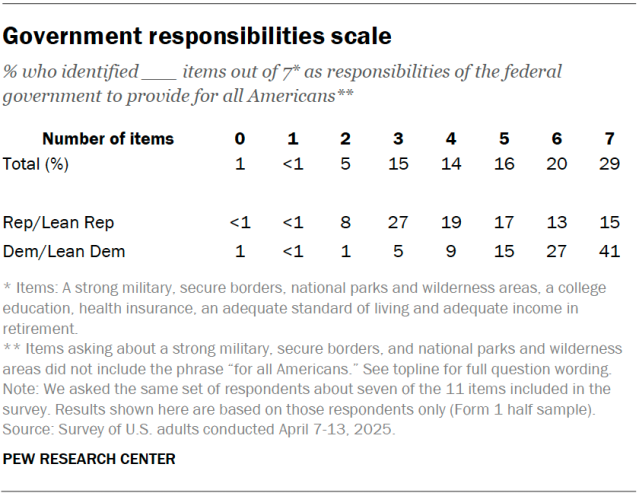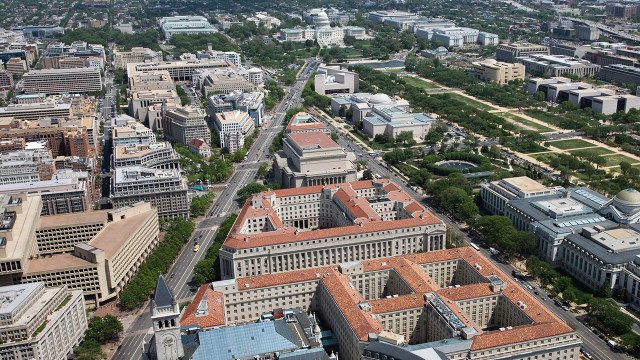
Majorities of Americans say the federal government has a responsibility to provide a wide array of support and services for the country – but there is more consensus about some domains than others.
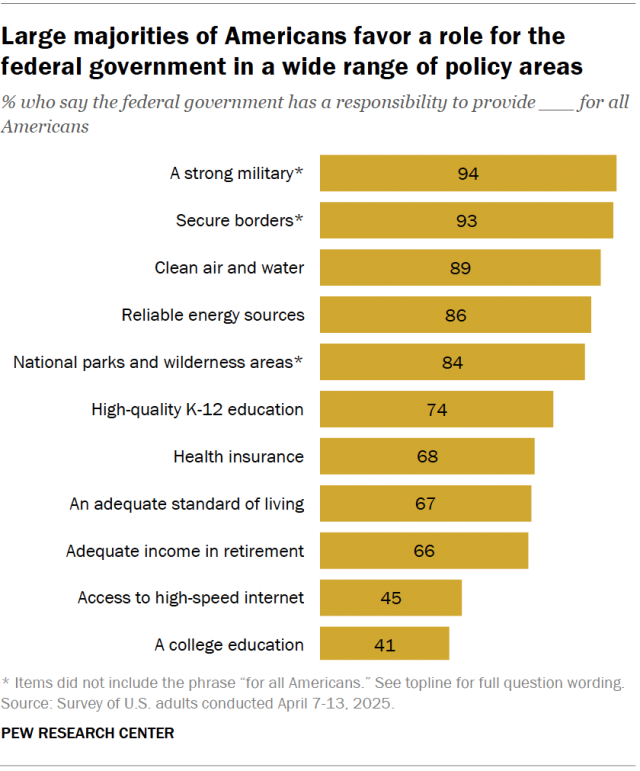
Nearly all Americans say the federal government has a responsibility to provide a strong military and secure the nation’s borders.
These are seen as government responsibilities by overwhelming majorities in both parties: 97% of Republicans and Republican-leaning independents say each is the federal government’s responsibility, as do about nine-in-ten Democrats and Democratic leaners.
Large majorities in both partisan coalitions also say the government has a responsibility to provide clean air and water, reliable energy sources, and national parks and wilderness areas. About nine-in-ten or more Democrats say the government has a responsibility to provide each of these, compared with roughly eight-in-ten Republicans in each case.
Related: 5 facts about Americans’ views of government
Wide partisan gaps on government’s role in the social safety net, education
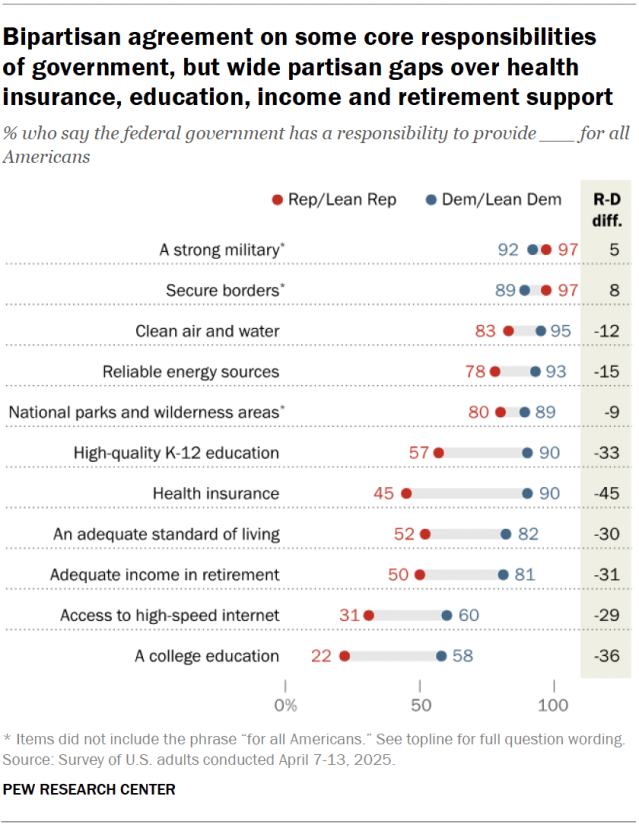
Republicans and Democrats continue to be far apart when it comes to whether the federal government has a responsibility to provide health insurance for all Americans. Nine-in-ten Democrats say it does, while half as many Republicans (45%) say this.
Democrats are also 30 percentage points more likely than Republicans to say the government is responsible for providing an adequate standard of living to all Americans: 82% of Democrats and 52% of Republicans say this.
And Democrats are 31 points more likely than Republicans to say the government has a responsibility to provide all Americans with adequate income in retirement (81% vs. 50%).
Education
Nine-in-ten Democrats say the federal government has a responsibility to provide high-quality K-12 education for all Americans, compared with a narrower 57% majority of Republicans.
There also are sharp differences in views of the government’s role in higher education. Nearly six-in-ten Democrats (58%) say the federal government has a responsibility to provide a college education to all. A far smaller share of Republicans (22%) say this.
Access to high-speed internet
Six-in-ten Democrats say the government has a responsibility to provide access to high-speed internet for all Americans. Republicans (31%) are about half as likely to say this.
Changing views of government responsibilities
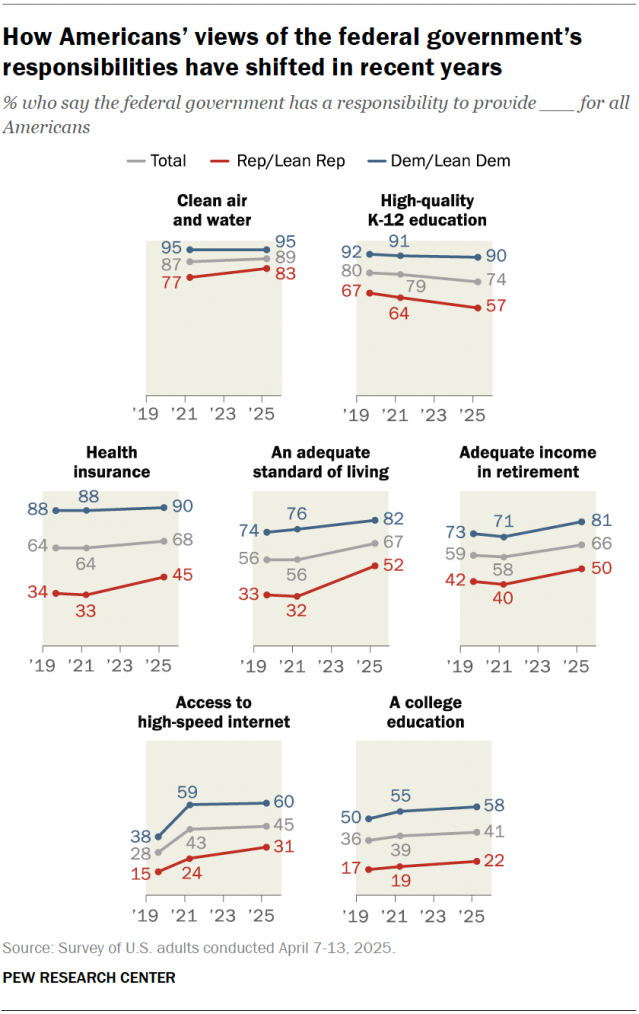
Views on several of these items have shifted over the past four years, with the most pronounced changes coming among Republicans.
Overall, the share of Americans who say the government is responsible for providing an adequate standard of living for all Americans is 11 percentage points higher than in April 2021 (67% now, 56% then).
Both Republicans and Democrats have become more likely to say this. Around half of Republicans (52%) hold this view today, up 20 points from 2021, while 82% of Democrats say the same, up 6 points.
Republicans and Democrats are also both 10 points more likely than in 2021 to say the government is responsible for providing adequate income in retirement.
When it comes to providing health insurance, nearly seven-in-ten Americans (68%) see this as a government responsibility, up modestly from 64% in 2021. Republicans are 12 points more likely to say this than they were previously.
Republicans are also 7 points more likely to say access to high-speed internet is a government responsibility. Overall, Americans are about as likely to say this as they were in 2021.
By contrast, Americans have become 5 points less likely to say high-quality K-12 education is a responsibility of the federal government. A smaller majority of Republicans now say this compared with four years ago (57% today vs. 64% then).
How views of government responsibilities relate to views of Trump administration cuts to departments and agencies
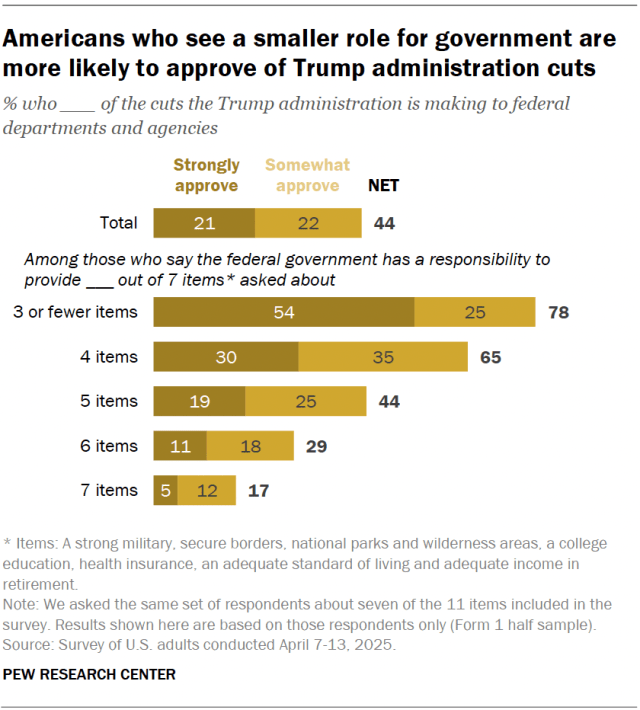
Americans who see a more limited role for the federal government are particularly likely to support the Trump administration’s recent cuts to departments and agencies. Those who see more responsibilities for government largely disapprove of these cuts, according to the same survey.
We asked the same set of respondents about seven of the 11 items included in the survey.
- 78% of those who say the government has responsibility in three or fewer of the seven items asked about support the administration’s cuts to federal departments and agencies.
- By comparison, just 17% of those who say the federal government has a responsibility in all seven areas approve of the administration’s reductions to federal departments and agencies, while 83% disapprove.
This relationship partially reflects partisanship: Republicans are far less likely than Democrats to say the federal government has a responsibility in several of the domains included in the survey and far more likely to approve of the Trump administration’s cuts.
However, the pattern holds even after taking partisanship into account.
For example, Republicans who say the government has a responsibility in three or fewer of seven areas are 46 percentage points more likely to approve of the administration’s cuts than Republicans who say the government has a responsibility in the maximum of seven areas (91% vs. 45%). Similarly, disapproval is more widespread among Democrats who see more responsibilities for the government.
Views of the size of government
The share of Americans who say they prefer a bigger government that provides more services has modestly ticked up since the Center last asked this question a year ago.
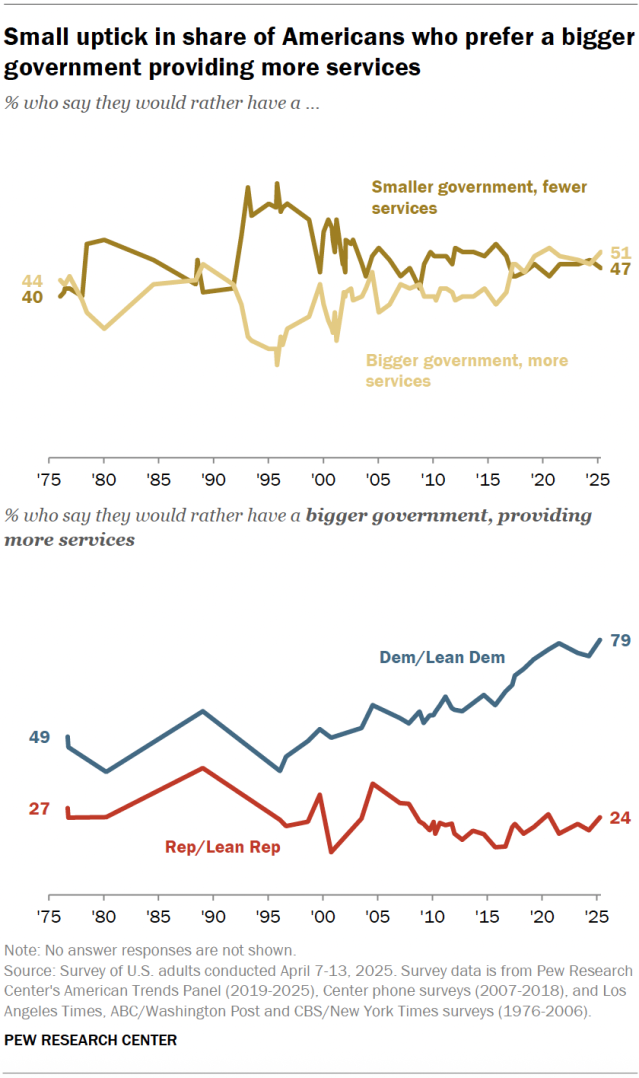
Roughly half of adults (51%) now say they prefer a bigger government with more services, while 47% prefer a smaller government and fewer services. In April 2024, 48% said they preferred a bigger government, while 49% said they preferred a smaller government.
The public has been closely divided on this question for several years now, going back to the beginning of Donald Trump’s first term as president. Current partisan differences are about as wide as they have ever been:
- 75% of Republicans prefer a smaller government, while 24% prefer a bigger government.
- 79% of Democrats prefer a bigger government, and 20% prefer a smaller government.
Note: Here are the questions used for this analysis, the topline and the survey methodology.
